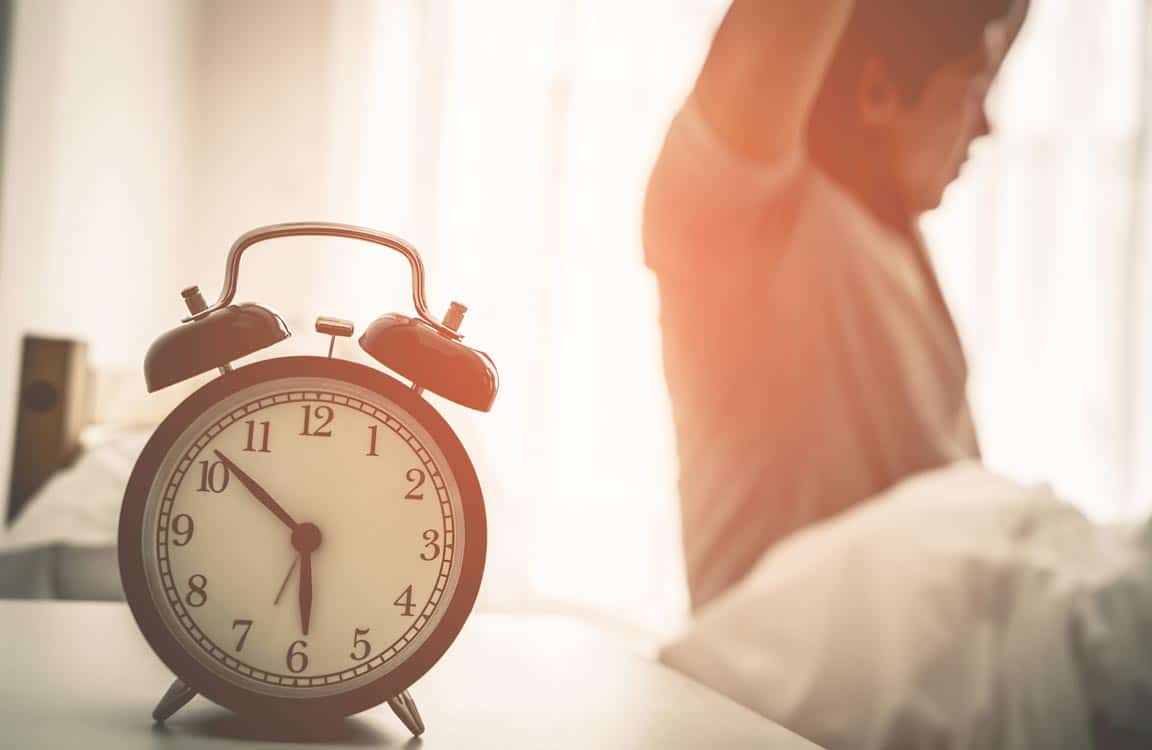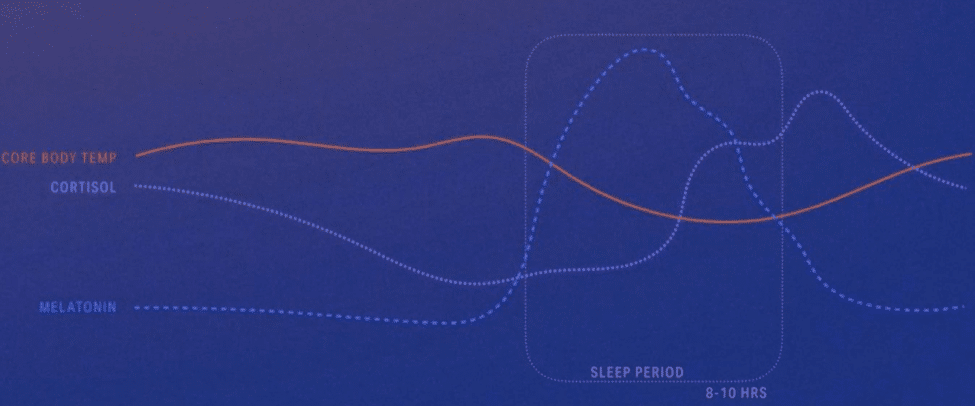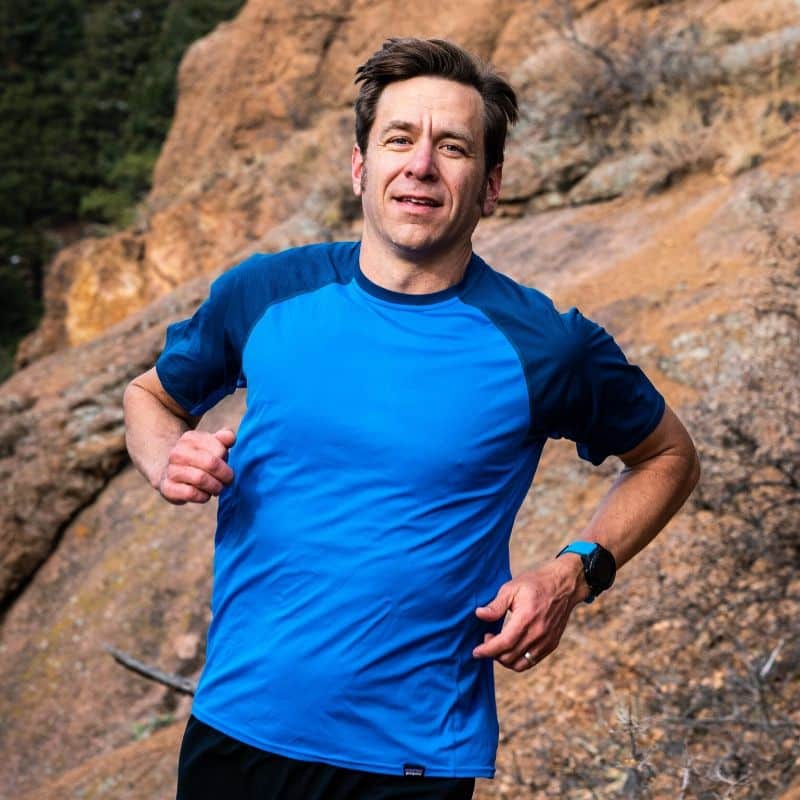
Sleep and Athletes: How to Optimize Sleep to Boost Performance
By Jason Koop,
Head Coach of CTS Ultrarunning
Sleep matters for a lot of reasons, and may even matter as much some of your training! For starters, the physiological repair and growth that actually makes you better happens when you rest, but predominantly when you sleep. It improves motor learning (learning a new skill) and cognitive function. And better sleep can lead to better emotional well being. Unfortunately, the converse is also true; a lack of sleep can lead to a decrease in optimism and mood.
None of this should come as a shock to athletes. You have experienced it first hand when you woke up in the middle of the night to a crying child, barking dog or unruly neighbors and you felt slow and groggy the next day. You may have even snapped at your significant other for something trivial. It’s OK, we’ve all been there. Because sleep has a major effect on training and recovery, it’s important to understand how you can optimize your sleep to optimize performance.
Sleep Restriction Research
Most research on sleep restriction and athletic performance is done with a relatively simple setup. First, some poor subjects perform a baseline test (LT/VO2max test or time to exhaustion test, etc.) when they are rested. Then, they endure a few nights of interrupted sleep (protocols differ, but the gist is missing out on a few hours of sleep per night for a few nights in a row). After the sleep interruption, sleepy subjects are then retested in the ‘sleep restricted’ state.
Many early studies indicated that a few days of a few hours of sleep restriction had little to no impact on varying measures of strength and endurance performance (see this review paper, and note skill and precision sports are affected to a greater extent by sleep loss compared to endurance sports). However, more recent studies are now pointing to a ~2-4% decline in endurance performance after sleep restriction. That would matter at an international level competition where the stakes are very high and the margin between winning and losing extremely narrow. But the reality from a day-to-day workout standpoint is that you won’t experience much of a performance.
The takeaway for athletes is if you have one or two terrible nights of sleep, you can probably just suck it up and get in a decent workout. You also have no excuse for a disastrous race due to one poor night’s sleep. As a coach, I rarely change an athlete’s workout due to one night of poor sleep, unless there is some other confounding factor like being on the verge of injury or illness, at the end of a long training block, or any other negative combination of objective and subjective measures. All this being said, it would be easy to look at this combination of research and practice and say, “Well, if it is not affecting performance, restricted sleep really does not matter.”
Au contraire!
Effect of Sleep on Illness and Injury Risk
While missing out on a few hours of sleep for a few nights might not affect acute endurance performance much, the effect that high quality sleep has on your immune system – and the ability to recover (or not) – is quite astounding. Both of these matter in the long run, as they affect week-to-week consistency, which is a far better indicator of success than any one single workout.
Take, for example, this study that found sleeping more than 8 hours per night reduced the chance of injury by 61% in adolescent elite athletes. As a comparison, strength training, which has long been lauded for reducing injury risk in endurance athletes, reduces the chance of injury by about the same amount, according to this meta study. The point being, hitting the gym for a couple of hours a week has a similar effect on injury prevention as getting in a few extra hours of sleep.
Sleep affects your immune system similarly and just as dramatically. In this study, adults who sleep fewer than 7 hours per night for 14 consecutive nights are nearly 3 times more likely to develop a cold. That’s right, if you miss out on just an hour of sleep per night for two weeks you are now three times more likely to get a cold and miss several days of training.
The simple takeaway is that sleep matters. It matters a little bit on the acute performance side of things, but more importantly, it matters more for long term health, injury prevention, and training consistency. And because sleep matters more for the long term, I want athletes to think of sleep hygiene as habit to adapt to, not a short-term issue to fix.
The Architecture of Sleep
In order to understand sleep hygiene, it is important to understand the basics of what goes on before, during, and after you sleep. Stay with me here, because how you get to sleep is critical for unlocking the habits you will need to adopt for better sleep.
The slide below was adapted from a presentation developed by the Under Armor Performance Team. It beautifully illustrates how three critical areas: core body temperature, cortisol, and melatonin, are affected just before, during, and after sleep. Notice that core body temperature and cortisol go down and melatonin goes up right as sleep onset occurs. The key to unlocking powerful sleep lies in setting up your room and your habits to take advantage of the constellation of these changes.

Steps for better sleep habits
Step one: Set up your room
Your bedroom should be able to be described in the following words: calm, cool, dark, and quiet.
Calm
Your bedroom should be for sleep and sex, that’s it (yes, I realize the irony of ‘sex’ being referred to in the ‘calm’ section). The only tool required for both is a bed. Anything else that is in your bedroom detracts from a calm environment and thus detracts from sleep. So, remove the TVs, iPads, and yes, even your phone (more on this later). Want an alarm clock? You know those existed before smartphones, right? Invest $10 in a battery-powered alarm clock and keep your phone somewhere else. Instagram can wait.
You can take this a step further and eliminate the clutter in your bedroom. Messy and disorganized night stands, clothes drawers, papers from work (…especially papers from work) and other distractions will just clutter your mind. And a cluttered mind is not a calm one. So, cut the clutter and set up your bedroom so that it is calm.
Cool
Ideal room temperatures are 60-67 degrees Fahrenheit. That’s downright cold, and colder than most people have their rooms set up. Why is cold so important? Because this facilitates the natural drop in body temperature described above. This doesn’t mean you have to be freezing in your bed. Using blankets in a cooler room allows you to more easily establish and maintain a core body temperature conducive to sleep than a warm room and lighter sheets.
Dark and quiet
Block out all of the light and as much sound as possible. Light (and the absence thereof) has the biggest effect on telling your body when it is time to sleep and time to be awake. Quite simply, when it is light outside, your body thinks it’s time to be awake. When it’s dark, your body thinks it is time for bed. Simple blackout curtains can make a big difference in blocking the ambient light that can seep through windows. If you are traveling, pick a room away from the elevators and highway and on the ground floor (provided that you won’t get any sound from your upstairs neighbors).
Step two: Establish your bedtime routine
Remember, you are creating habits, not taking shortcuts. Naturally, establishing new habits takes some time and deliberate attention. Consistency within your sleep/wake time, combined with enough sleep (>8 hours), will establish much of the routine.
First, turn off your brain and any electronics 90 min before bedtime. Create a routine where instead of checking e-mail or Twitter, you journal, read for pleasure, or meditate just before bed.
Remember that blue light emitted from your smartphone suppresses the release of melatonin (see above why melatonin release is important). Blue light filters on your phone and tablet only go so far. I recommend shutting off all electronic devices within this 90-minute window.
► Free Cycling Training Assessment Quiz
Take our free 2-minute quiz to discover how effective your training is and get recommendations for how you can improve.
► Free Ultrarunning Training Assessment Quiz
Take our free 2-minute quiz to discover how effective your training is and get recommendations for how you can improve.
If you need an extra boost of calmness, take a short, warm shower just before bedtime. By taking a short, warm shower, you elevate the distal skin temperature by ~1 degree, which in turn lowers core temperature (see chart above).
Step 3: Establish your wake-up routine
Your wake up routine is just as important. My New Year’s resolution this year was to wake up at 4:30 AM every day. I used to adjust my wake up time for my workout routine. If I ran longer in the morning, I’d wake up earlier. If I had a day off or a shorter run, I’d sleep in. On weekends I would regularly sleep in until well after the sun rose. This was a terrible pattern, as I was waking up at a different time – between 4 AM and 8 AM – every day. I might as well have been traveling cross country every day of the week. My body just had no routine.
Now, regardless of workout schedule or time zone, I wake up at 4:30 every day. What happens if you stay up late? Take a nap. This will keep your bedtime and wake time routine. If you can’t take a nap, then modify your normal wake up time as best as you can so it can stay consistent.
Step 4: Your morning routine
Your routine after your rise (whether it’s morning or another part of the day) is just as important as your routine before you sleep and can follow the subsequent steps: seek light, move, and nourish. As mentioned above, light will have the biggest effect on signaling your body it’s time to lay down or to rise. So, seek light (preferably sunlight) when you rise. If you get up around 4:30 like me, chances are the sun isn’t out yet. That’s OK, just turn up the lights in room where you get yourself ready for the day.
After you are up and have some light, it’s time to move. This can be your morning workout or pre-workout routine, or simply getting some chores done around the house. I recommend getting in 10-20 minutes of movement first, before settling down to read the morning paper or heading out the door for your run. After, or while, you are getting in this first-of-the-day movement, nourish yourself with some fluids (you are dehydrated after sleeping) and your pre-workout snack or breakfast.
Sleep Aids: Skip the drugs
In our quick fix society, everyone wants the easy answer, even for a better night’s sleep. Physicians prescribe Ambien, Lunesta, Restoril, Sonata and a host of other prescription medications to treat a range of sleep disorders. And for some people that may be necessary, though hopefully only for a short time. There are even herbal and over the counter remedies, such as chamomile and melatonin that are easy, effective and relatively safe to try. While many of these prescription medications and over the counter remedies do in fact work (to varying degrees), my advice to athletes is to skip the drugs and supplements and focus on your habits first.
Even with a supplement as innocuous as melatonin, if taken at the wrong time, or in the wrong dose, can make your sleep dysfunction worse instead of better. However, the primary reason to focus on habits first is that your body literally needs sleep. You are wired to do it. Creating an environment where you can take advantage of what you need is far more effective than taking a pill to substitute for the process.
Summary
If you want the CliffsNotes version, here you go!
- Better sleep will lead to better performance. Poor sleep impairs acute endurance performance to a mild extent. Poor sleep’s bigger effects are on the recovery process and immune response.
- Routine matters for sleep hygiene. Establish a pre-bedtime routine that emphasizes calm, and turn off electronics 90 minutes before bedtime
- Keep your bedroom calm, cool and dark
- Upon waking, seek light, move, and nourish
- If you have sleep disturbances, choose a nap over sleeping in
- Skip the drugs and supplements and focus on habits
More info
If you want more info on proper sleep hygiene:
- see the references below
- Check the Guru Podcast episode #52 with Jon Bartlett
- Listen to Dr. Bubbs Performance Podcast Season 2 Episode 11 with Cheri Mah
- Or give Shona Halson and Cheri Mah a follow on Twitter
References
Basta M, Chrousos GP, Vela-Bueno A, Vgontzas AN. CHRONIC INSOMNIA AND STRESS SYSTEM. Sleep Med Clin. 2007;2(2):279-291.
Sarah Kölling, Rob Duffield, Daniel Erlacher, Ranel Venter, and Shona L. Halson. Sleep-Related Issues for Recovery and Performance in Athletes. International Journal of Sports Physiology and Performance 2019 14:2, 144-148
Craig Whitworth-Turner, Rocco Di Michele, Ian Muir, Warren Gregson & Barry Drust (2017) A shower before bedtime may improve the sleep onset latency of youth soccer players, European Journal of Sport Science, 17:9,1119-1128, DOI: 10.1080/17461391.2017.1346147
Enjoying This Article? Get More Free Running Training Tips
Get our coaches' best training advice, delivered straight to your inbox weekly.
Rosen, P. , Frohm, A. , Kottorp, A. , Fridén, C. and Heijne, A. (2017), Too little sleep and an unhealthy diet could increase the risk of sustaining a new injury in adolescent elite athletes. Scand J Med Sci Sports, 27: 1364-1371. doi:10.1111/sms.12735
Venter, Rachel. (2012). Role of sleep in performance and recovery of athletes: A review article. South African Journal for Research in Sport, Physical Education and Recreation. 34. 167-184.
Lauersen, J. B., Andersen, T. E., Andersen, L. B. (2018). Strength training as superior, dose-dependent and safe prevention of acute and overuse sports injuries: A systematic review, qualitative analysis and metaanalysis. British Journal of Sports Medicine, 52, 1557-1563.
Fitzgerald, Dominic et al. The influence of sleep and training load on illness in nationally competitive male Australian Football athletes: A cohort study over one season. Journal of Science and Medicine in Sport. Volume 22 , Issue 2 , 130 – 134.
https://www.sciencedaily.com/releases/2016/06/160613130709.htm
► FREE Mini-Course: Learn How to Maximize Your Limited Training Time
Learn step-by-step how to overcome limited training time and get faster. Walk away with a personalized plan to increase your performance.
"*" indicates required fields


Comments 16
Pingback: Time-Crunched Athlete Guide to Better Sleep - CTS
Pingback: 8 Truest Statements About Recovery After Workouts - Chris Carmichael
Pingback: 14 Easy Wake Up Tips For Early Morning Workouts - CTS
Pingback: Ultramarathon Daily News | Tue, April 2 - Yeovil Marathon
Pingback: Cycling Challenge: Train What You Are Bad At - CTS
Pingback: CTS Position Statement on Coaching and Training During the COVID19 Pandemic - CTS
Pingback: We asked Santa what runners really want for Christmas, and it's not more stuff. - Jason Koop
Pingback: (Uninjured) Heel-Strikers, Rejoice! Change to Forefoot Striking Not Necessary, Research Shows - Jason Koop
Pingback: Get Ready for 2020 with the December 35 Challenge - CTS
Pingback: Do Your Worst To Be Your Best - Chris Carmichael
Pingback: Overnight Runs Are Dumb. Here’s Why You Should Do Them Anyway. - Jason Koop
Pingback: What Data is Worth Tracking for Ultrarunners - Jason Koop
Pingback: How To Be Relentless – Randy's Runs
Pingback: Overtraining: 10 Warning Signs and How to Fix It - CTS
So you go to bed before 8:30 every night? How does that affect your relationships?
Pingback: Ultramarathon Daily News | Tue, April 2 | Ultrarunnerpodcast.com